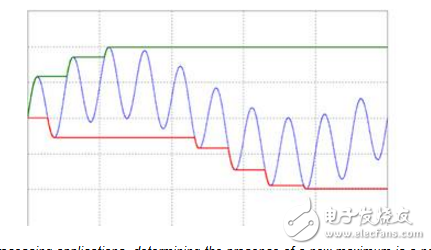
资料下载

从峰值检测器的角度探讨硬件与软件的平衡
硬件与软件权衡。第2部分:峰值检测器
编者按:这是一个典型的架构决策:它的功能是在硬件中实现,以及在软件中实现。这两部分系列的第1部分着眼于使用比较器作为设计的考虑和权衡。在第2部分中,我们将使用峰值检测器作为示例。
正如本系列文章的第1部分所述,人们常常认为软件是实现核心功能的简单方法,尽管基于硬件的解决方案通常是更好的方法。
在给定的情况下,达到“最佳”答案需要设计者考虑许多设计因素和性能目标之间的权衡。本文将从峰值检测器的角度探讨硬件与软件决策,同时提供一些示例。

Defining the peak detector function
Like comparators, peak detectors are a basic circuit building block for many real-world signal processing applications. Peak detection determines that a signal has passed its peak value and signals the system to indicate this occurrence. They can be used to mark the presence of valid pulses within a continuous stream, capture radar signal returns, monitor heart pulses, or to indicate a new maximum such as in data from oscillations (buildings swaying due to an earthquake)。
Before designing a peak detector, it’s important to be very clear about the objectives of the project, as there is some overlap and ambiguity in terminology. First, there’s a maximum signal detector, which captures the maximum value of a signal indefinitely, until a new maximum occurs (Figure 1)。
An example might be a sensor that is tracking the maximum shock to which a package in transit is subjected. The lesser shocks are not of interest; only that maximum is of concern.
声明:本文内容及配图由入驻作者撰写或者入驻合作网站授权转载。文章观点仅代表作者本人,不代表电子发烧友网立场。文章及其配图仅供工程师学习之用,如有内容侵权或者其他违规问题,请联系本站处理。 举报投诉
- 相关下载
- 相关文章








